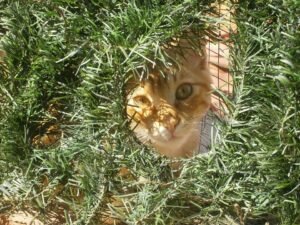
“`html
Introduction
Adopting a cat is a rewarding and fulfilling experience, offering both the adopter and the feline a chance for companionship and mutual enrichment. However, when considering adopting a declawed cat, there are unique challenges and considerations to bear in mind. Declawing is a controversial practice that involves the removal of a cat’s claws, often through surgical amputation of the end bones of the cat’s toes. This procedure can lead to a variety of physical and psychological issues for the cat, which potential adopters should understand fully when making their decision. This article will delve into the essential insights and tips for adopting declawed cats, ensuring that both the cat and the owner have a harmonious and healthy relationship.
Understanding Declawing
Declawing is often misunderstood as a simple nail trim, but it is far more invasive and permanent. In many countries, the procedure is banned or heavily restricted due to the pain and potential complications it causes. The procedure can lead to chronic pain, arthritis, and behavioral changes in cats. Understanding the ramifications of declawing is crucial for potential adopters, as it impacts the ongoing care and environment needed for a declawed cat.
Physical and Behavioral Implications
Declawed cats may experience a range of physical issues, including altered gait, joint problems, and sensitivity in their paws. These physical ramifications can lead to behavioral problems such as litter box avoidance, increased aggression, or heightened anxiety. Adopters must be prepared to address these potential challenges and provide the necessary resources and environment to help the cat adapt comfortably.
Preparing Your Home for a Declawed Cat
Creating a safe and accommodating environment is crucial when bringing home a declawed cat. Without claws, cats lose their primary means of defense and gripping. Here are some considerations to ensure their safety and comfort:
Soft Surfaces
Ensure that the cat has access to soft surfaces to walk and rest on, minimizing any discomfort from walking on hard floors. Providing plenty of plush rugs, carpets, and padded resting areas can alleviate pressure on their sensitive paws.
Secure Climbing Areas
Declawed cats may struggle with balance and climbing. Provide secure and low-level climbing structures, such as cat trees with ramps or gentle inclines, to encourage exercise and play without risking injury.
Litter Box Solutions
Some declawed cats may develop aversions to certain types of litter due to discomfort. Opt for soft, fine-grained litters that are gentle on their paws, and consider using a larger litter box to accommodate potential changes in their posture and movement habits.
Behavioral Support and Enrichment
Due to the potential for behavioral changes post-declawing, adopters should be prepared to offer additional support and enrichment to help declawed cats thrive.
Stress Reduction
Declawed cats can be more prone to stress and anxiety. Providing a stable routine, a quiet and safe environment, and gradual introductions to new experiences or changes in their surroundings can help reduce stress levels.
Interactive Play
Engage in regular interactive play sessions using toys that stimulate their hunting instincts, such as feather wands or laser pointers. This not only provides physical exercise but also mental stimulation, which is crucial for their overall well-being.
Behavioral Observations
Monitor the cat for signs of pain or behavioral shifts, such as limping, withdrawal, or aggression. Seeking advice from a veterinarian or a feline behaviorist can provide insights and strategies for addressing any issues that arise.
Health Considerations
Declawed cats require specific health considerations to ensure their continued well-being.
Regular Vet Check-Ups
Schedule regular veterinary visits to monitor the health of your declawed cat, particularly focusing on joint health and mobility. Early detection of arthritis or other complications can lead to more effective management of these conditions.
Diet and Exercise
Maintain a balanced diet and regular exercise routine to prevent obesity, which can exacerbate joint problems in declawed cats. Consult with a veterinarian to develop a diet plan tailored to your cat’s specific needs.
Adopting a Declawed Cat: Making the Decision
Choosing to adopt a declawed cat is a commitment that requires empathy, understanding, and patience. Prospective adopters should be fully informed of the challenges and prepared to make necessary adjustments to ensure the cat’s well-being.
Evaluating Compatibility
Consider the compatibility of a declawed cat with your lifestyle and household. Homes with young children or other pets may require additional supervision and adaptation to ensure the cat feels safe and unthreatened.
Commitment to Care
Adopting a declawed cat means committing to providing a lifetime of care tailored to their specific needs. This includes being vigilant about their health, behavior, and environmental comfort.
Conclusion
Adopting a declawed cat offers a unique opportunity to provide a loving home to an animal that may have been overlooked due to the challenges associated with declawing. With the right preparation, understanding, and ongoing commitment, adopters can offer these cats a life of comfort and happiness. By addressing their physical and behavioral needs, creating a safe and enriching environment, and staying proactive about their health, you can ensure that your declawed cat thrives in its new home.






